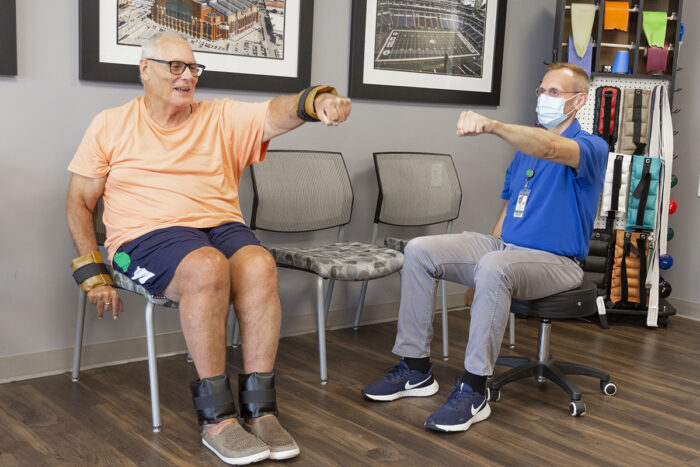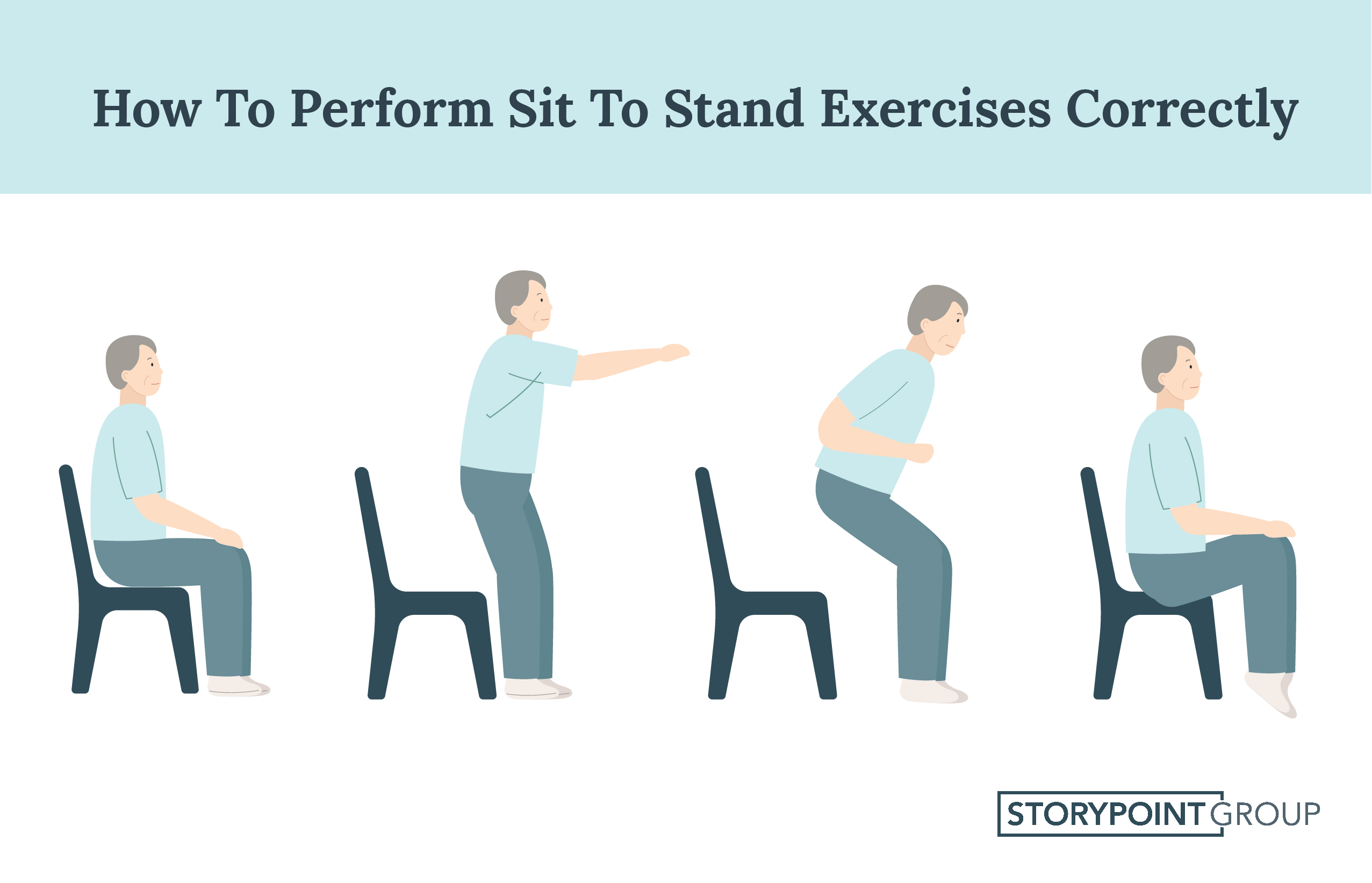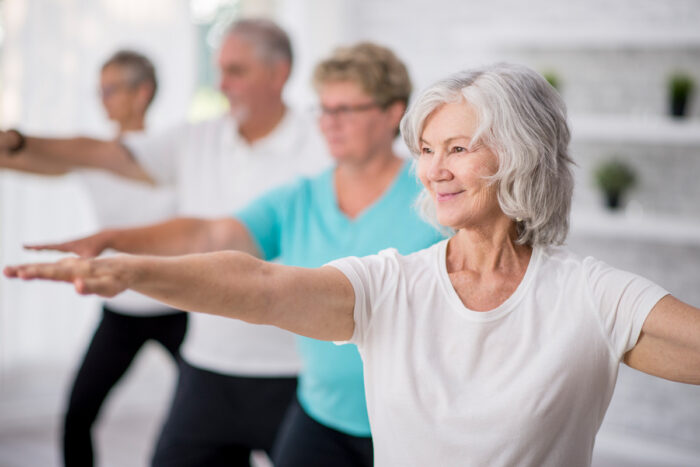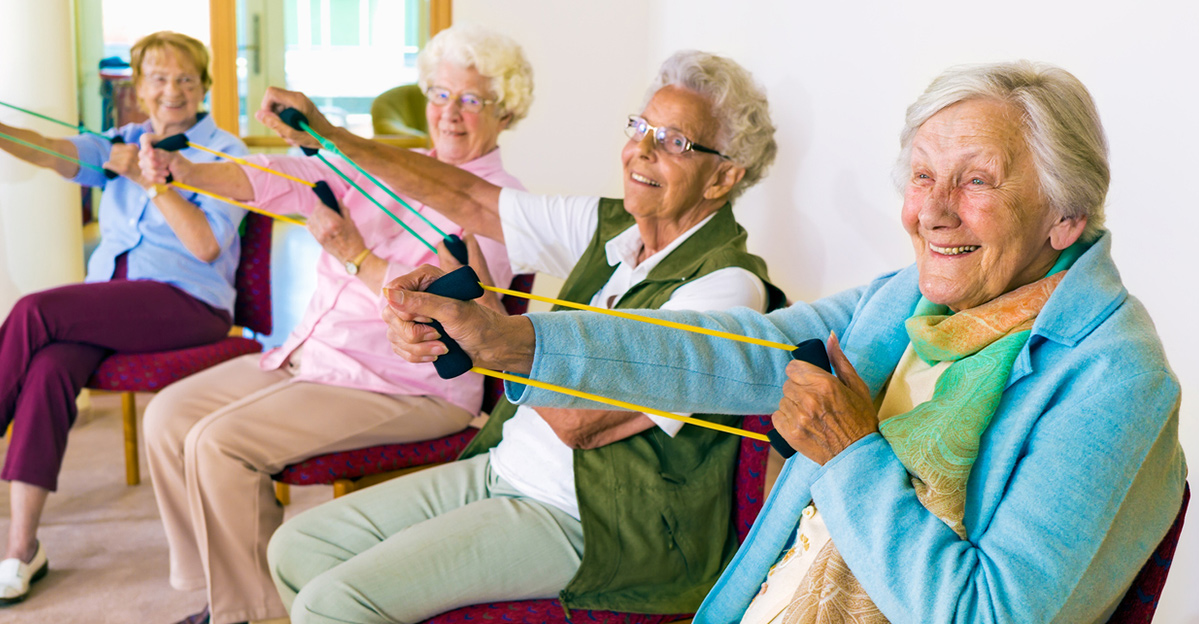Physical exercise can have numerous key health and wellness benefits. However, as we enter our golden years, it’s normal for our bodies to struggle with the physical demands of exercises we used to know and love in our youth.
If you’re looking for a gentle, low-impact exercise to kickstart your fitness journey, you may consider adding sit to stand exercises to your workout routine. They can also be adjusted to accommodate your fitness ability, so don’t be shy to start — even if you haven’t been working out!
What Are Sit To Stand Exercises
These gentle exercises can strengthen your lower body and improve mobility, which can help you remain independent for longer. From getting out of bed to standing from a chair or using the bathroom, adding sit to stand exercises to your routine can boost your strength and balance, and help you keep independence for longer.

Sit To Stand Exercise Benefits
Adding gentle, low-impact exercises to your routine can help improve your mobility and overall well-being. Let’s a look at a few key sit to stand exercise benefits:
- Improved strength: Sit to stand exercises can help build and maintain muscle strength, which is crucial for day-to-day activities like getting out of bed and climbing stairs.
- Enhanced balance: Practicing sit to stand movements can help improve your balance and reduce the risk of falls and injuries.
Increased mobility: By promoting flexibility and joint mobility, exercise can help seniors maintain an active lifestyle.
- Independence: Being able to rise from a chair or a sofa with ease can help you maintain your independence and reduce the need for assistance.
- Better posture: Sit to stand exercises encourage good posture, which can help alleviate back pain and improve overall spinal health.

How To Perform Sit To Stand Exercises Correctly
Click To Download
How To Perform Sit To Stand Exercises Correctly
Most chair exercises require minimal space and can be done just about anywhere. Here are a few key steps to help you enjoy and get the most out of this exercise. Don’t forget to get your doctor’s approval before you try a new exercise.
- Sit in a sturdy chair (preferably one without wheels) with your feet shoulder-width apart.
- Slowly and steadily push through your feet to a standing position.
- Gently bend your knees in a slow, controlled movement to sit into the chair.
- Take a break and repeat as many times as you’re comfortable.
How To Make The Exercise More Challenging As You Get Stronger
As your joints and muscles get stronger over time, some sit to stand exercises can feel less challenging. Here are a few techniques to help you push yourself further. Remember to always listen to your body, and stop the exercise immediately if you feel any pain or discomfort.
- Hold the standing position: Try to hold the standing position for as long as you’re comfortable while keeping the muscles in your belly, lower back and pelvis tight.
- Increase the number of repetitions: Consider increasing the number of sit to stand repetitions.
- Use a lower chair: Standing up from a lower chair can increase the amount of muscle and joint travel and make the exercise more challenging.
- Don’t use your arms: Pushing off the chair can make it less difficult to lift your body from a sitting position. If you want a more challenging workout, try placing your arms on your chest when doing the exercise.
- Add weights: If you’re looking to make it more challenging, try to stand up while holding lightweight dumbbells or a bottle of water.
Safety Tips
Sit to stand exercise can help us maintain health and vitality as we age, but it’s essential to do so safely to avoid the risk of injury. Here are some key pointers to keep in mind:
- Consult your doctor before you try a new exercise.
- Perform sit to stand exercises with a friend or have supervision at all times.
- Begin your workout with a gentle warm-up to help get your muscles ready for action.
- Drink water before, during and after your workout to avoid dehydration.
- Pay attention to how your body feels. If you experience pain, dizziness or unusual discomfort, stop the exercise immediately and seek medical help.

Other Exercises To Improve Fitness
As we enter our golden years, physical activities can help maintain and improve your overall fitness and mobility. But, if you’re looking for alternatives that are just as fun, or want to add some variety to your routine, here are five gentle, low-impact options you can consider:
- Walking: Walking can be a great way to improve cardiovascular health, strengthen leg muscles and maintain joint flexibility. You can start with short, leisurely walks and gradually increase the duration and pace as you become more comfortable.
- Water aerobics: If you’re looking for a full-body exercise with minimal impact on your joints, water aerobics can be an excellent choice. The buoyancy of the water helps to support your body, which can make it gentle on your muscles and joints.
- Yoga: Yoga focuses on gentle stretching, balance and flexibility. Some yoga classes cater specifically to seniors and can be adapted to accommodate your fitness ability and unique needs. Performing yoga can help improve your posture, reduce stress and increase overall body strength.
- Tai Chi: Adding Tai Chi to your routine can help improve your balance, coordination and flexibility. It can be especially beneficial for seniors, as it can help improve balance and reduce the risk of falls.
- Chair exercises: Seated exercises, like leg lifts, seated bicep curls and chair squats can be a great option for seniors with limited mobility. You can add various seated exercises to your routine to help strengthen your joints and muscles.
- Pickleball: This increasingly popular paddle sport blends elements of tennis, badminton, and table tennis. Played on a smaller court with a lower net, it’s generally easier on the joints than tennis. Pickleball is excellent for enhancing hand-eye coordination, agility, and reflexes, while also providing a moderate cardiovascular workout. Its often social nature, especially when played in doubles, adds a fun community aspect to staying active.
Partnering With CorsoCare To Serve Seniors
CorsoCare, a preferred third-party provider of StoryPoint Group, offers seniors more than high-quality care services — seniors also gain a dedicated partner in their health journey.
Whether seniors need expert medical support at home, compassionate end-of-life care, or assistance with daily activities, CorsoCare provides personalized, compassionate care to enhance the quality of life at every stage.
Click here for additional resources and to learn more about CorsoCare.



